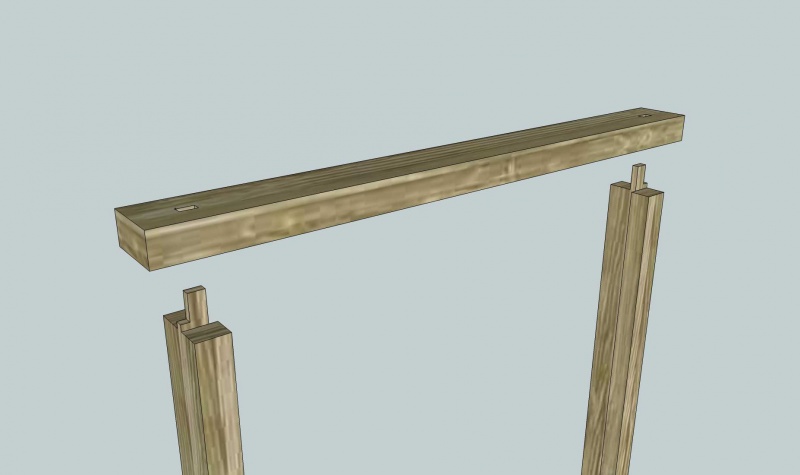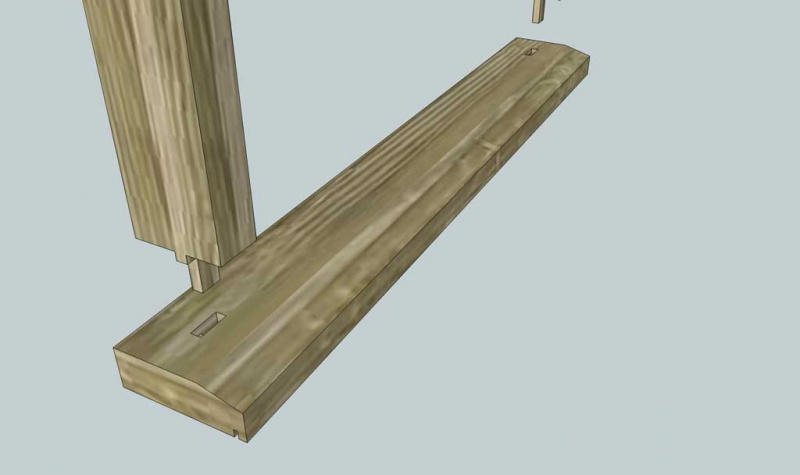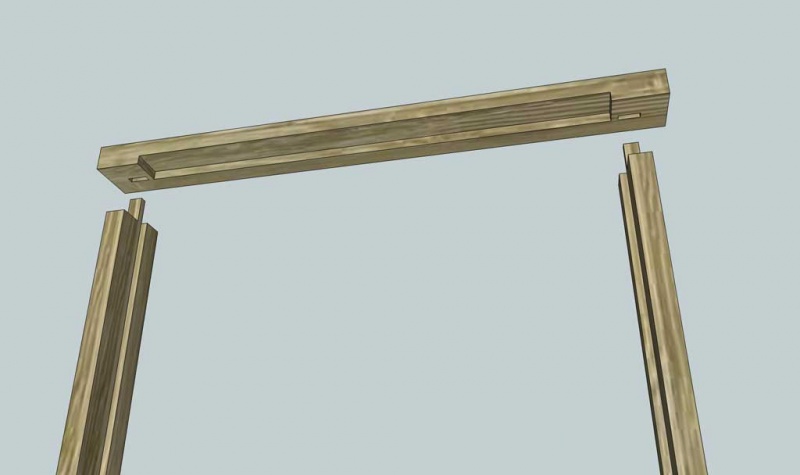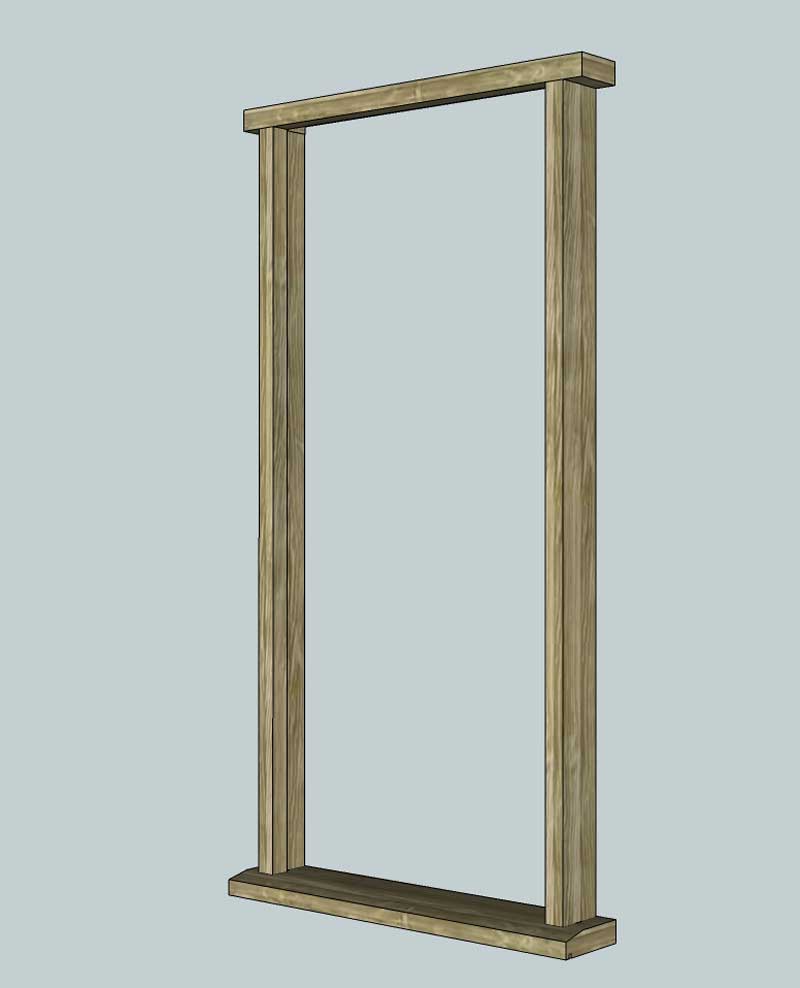Making an exterior door frame
Work in progress...
Introduction
This article describes one of a number of techniques for making an external door frame. Unlike a normal internal frame or door lining, an external frame needs of more substantial construction, and for security needs to have moulded door stops built into the frame, rather than supplementary door stops applied after installation.
Tools
This design will suit someone with access to basic hand tools and a router. A mortising machine will speed up construction but is not essential. A circular saw or table saw would be handy if making the (optional) threshold rail.
Materials
For the two door jambs, you will need 100x50mm stock, and the same for the top rail. A bottom threshold rail may or may not be required. If it is then this should be made from 150x50mm stock. Wood can be hardwood or softwood depending on requirements.
Procedure
If a threshold rail is required, this needs a bevel cut on the leading edge, and ideally a grove on the underside of the outside lip, to act as a drip bead. Machining is ideally done on a table saw, however a hand held circular saw will also suffice.
Next mark out the mortice and tenon joints on the ends of the rails (top end only if not using a threshold rail). The tenon here is 1/2" thick, and inset from the back and the outside of the jamb by 1/2" also. This allows more material toward the front and inside of the fram to allow for the rebate.
Cut the tenons either using a saw or your router. (see large tenon jig for one option)
Cut the mortices either by drilling away most of the waste and squaring up with a chisel (see the technique illustrated here) or using a mortising machine with a half inch chisel.
The final stage before assembly is to cut the rebate with the router. The actual width of the rebate will need to be set for your particular door thickness. A minimum depth of 1/2" is recommended. The rebate on the jambs is a straightforward rebate along the full length of the inner rear side of the frame.
The rebate for the top rail is a stopped rebate - i.e. it does not extend to the full width of the rail, and instead stops a distance from the ends of the rail equal to the thickness of the jambs minus the depth of their rebate.
The finished result when glued up and assembled should look something like:




